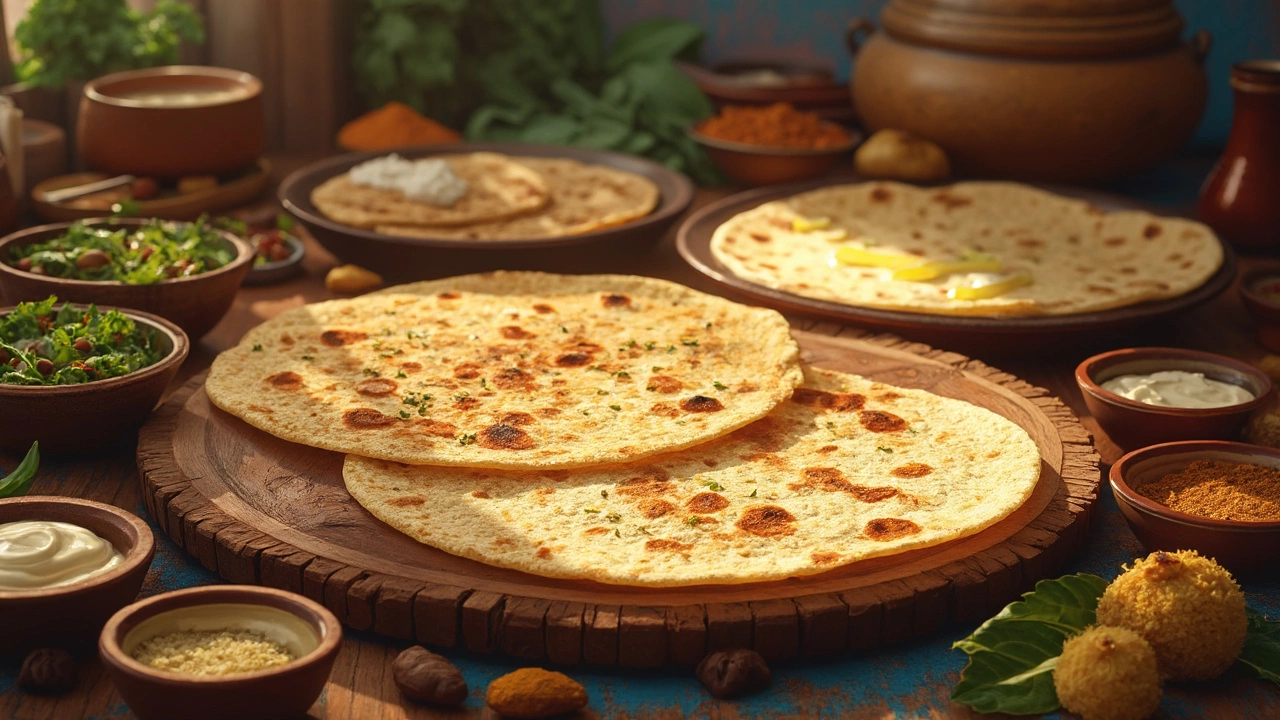Calories in Roti with Ghee
When you hear Roti with ghee, a soft Indian flatbread cooked or brushed with clarified butter, known for its rich flavor and higher calorie load. Also called ghee‑laden roti, the dish sits at the crossroads of comfort food and nutrition math.
The first thing to know is that a roti’s calorie count isn’t static. Roti, usually made from whole‑wheat flour, water, and a pinch of salt can range from 70 to 120 calories per piece depending on size and thickness. Add Ghee, clarified butter rich in saturated fats and each teaspoon contributes roughly 45 calories plus a dose of flavor. So the simple equation becomes: calories in roti with ghee = base roti calories + ghee calories. This semantic triple helps you see why a butter‑kissed roti often feels heavier than its plain counterpart.
Understanding the Calorie Breakdown
Portion size is the biggest driver. A 6‑inch roti weighs about 40 g and carries ~90 calories. If you drizzle 10 ml of ghee (≈9 g), you add another 80 calories, pushing the total close to 170 calories. The type of flour matters too. Using millet or chickpea flour can raise protein but also tweak the carb‑to‑fat ratio, changing the overall calorie profile. This relationship—flour choice influences calorie density—is another semantic connection worth noting.
Cooking method adds nuance. A roti cooked on a dry tawa (flat pan) stays lean, while a ghee‑smeared tawa introduces extra fat before the dough even lands. If you brush the finished roti with ghee, you control the amount more precisely. Older posts on our site, like “Why Isn’t My Roti Puffing?” and “Best Time to Add Oil in Roti Dough,” explain how fat affects texture and puff. Those same principles explain calorie variance.
Health‑conscious readers often wonder about the fat quality. Ghee is high in short‑chain saturated fats that melt at body temperature, making it easy to digest for many. It also contains conjugated linoleic acid (CLA) and fat‑soluble vitamins A, D, E, K. While these nutrients add value, they don’t erase the calorie count. This entity‑attribute pair—Ghee (attribute: nutrient profile, value: CLA, vitamins)—helps balance taste against diet goals.
If you’re counting calories, measuring is key. A kitchen scale can differentiate a 30 g roti from a 50 g one, and a teaspoon of ghee versus a tablespoon makes a 45‑calorie swing. Our guide on “Baking Soda in Roti” mentions that small leavening tweaks can puff the bread, letting you use less ghee while keeping softness.
For those wanting lower calories without sacrificing flavor, try these tricks: 1) Use a non‑stick tawa and only brush ghee after cooking; 2) Mix a tiny bit of oil into the dough—our “Oil in Roti Dough” post shows how that yields soft rotis with less surface fat; 3) Pair the roti with a high‑protein side like dal (see “Dal Nutrition Facts”) to make the meal more satisfying, so you naturally eat fewer rotis.
Another angle is regional variation. In Punjab, ghee‑rich rotis are a staple for celebrations, while South Indian households often prefer oil‑based chapatis. These cultural contexts shape how many calories a typical serving contains, linking the entity “Roti with ghee” to the related concept “Indian regional cuisine.”
When you plan a meal, consider the total calorie budget. A standard thali (plate) might include two rotis, a veg curry, and a dal. If each roti with ghee is ~170 calories, two bring you to 340 calories just from bread. Knowing this lets you adjust the curry’s oil content or portion size accordingly.
Remember that calories are just one piece of the health puzzle. Ghee supplies fat‑soluble vitamins, and whole‑wheat roti offers fiber. The combination can support satiety, steady blood sugar, and nutrient absorption—especially when paired with vitamin‑rich vegetables. So while the number matters, the overall nutrient synergy matters more.
Finally, if you’re tracking macros, break down the roti: roughly 15 g carbs, 3 g protein, and 5 g fat per plain piece; add ghee and you add about 5 g extra fat. This macro‑level view gives a clearer picture than calories alone, reinforcing the semantic link between “Roti with ghee” and “Macronutrient composition.”
Armed with these facts, you can decide how much ghee to use, which flour to choose, and how to fit a flavorful roti into your daily calorie goals. Below you’ll find practical tips, myth‑busting articles, and step‑by‑step guides that dive deeper into each aspect of roti nutrition, cooking tricks, and healthier swaps.

Calories in 1 Roti: Unveiling the Nutritional Facts
Discover the caloric content of 1 roti and understand how different ingredients and cooking methods can change its nutritional profile. Learn about the impact of adding ghee or pairing with sabzi on your meal's calorie count. Get tips on incorporating healthier variations of roti in your diet. Perfect for those curious about balancing pleasure and wellness in everyday meals.